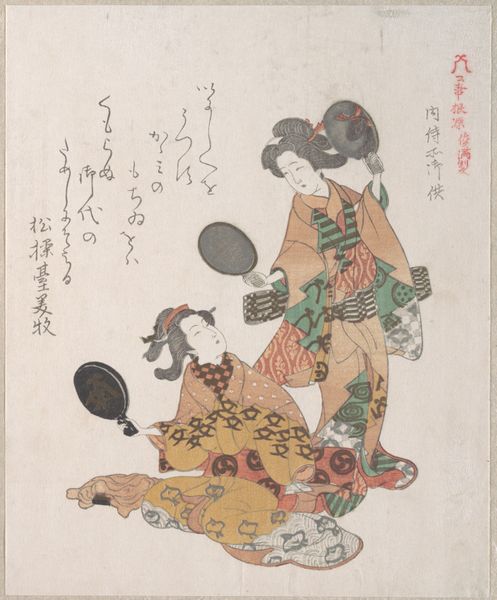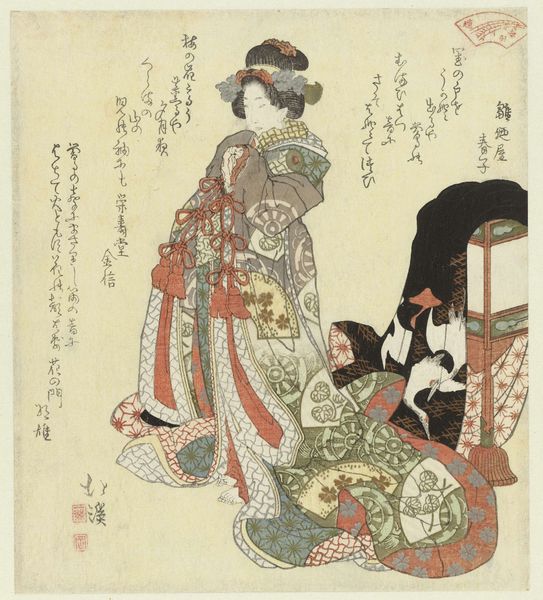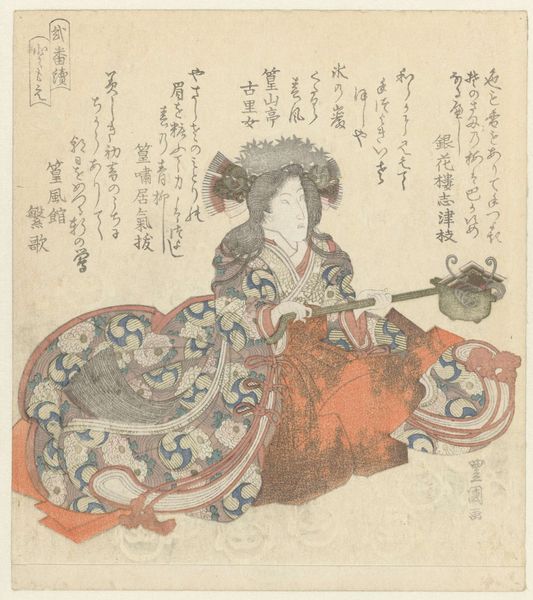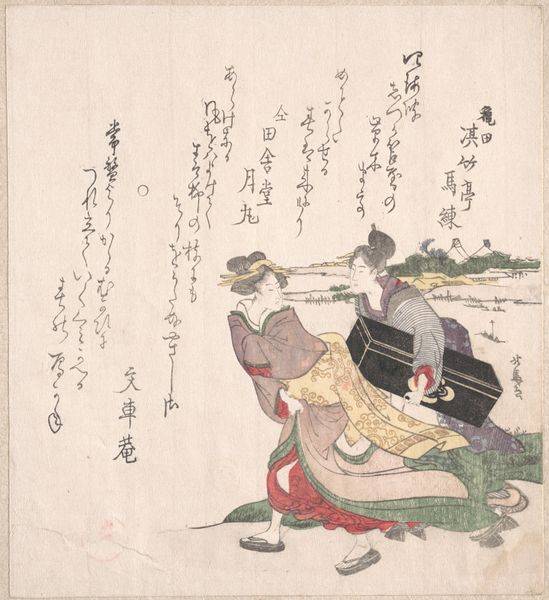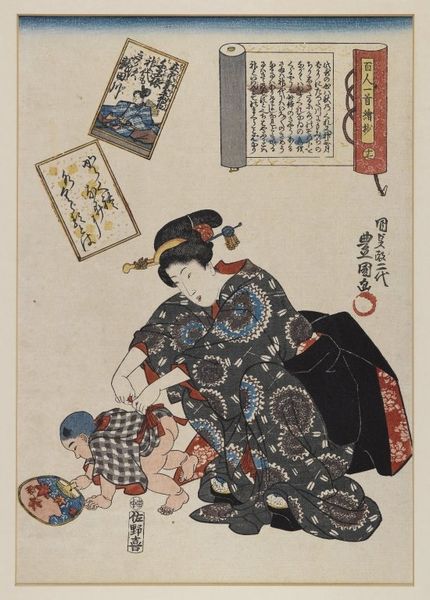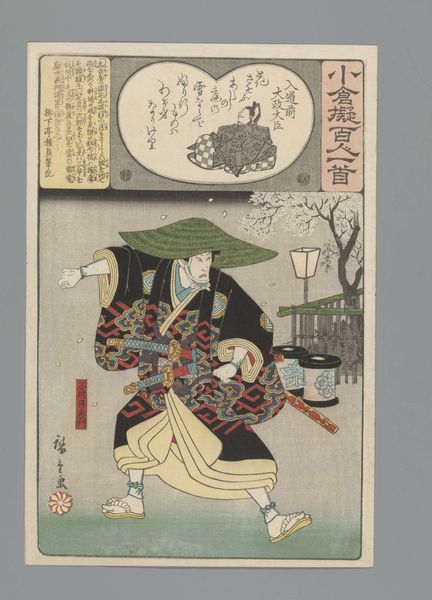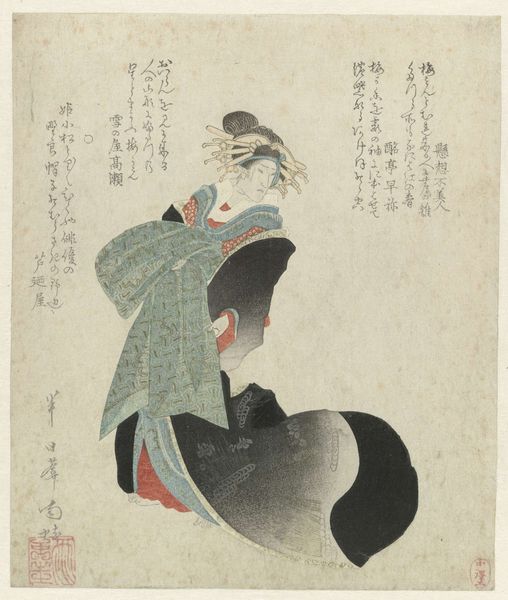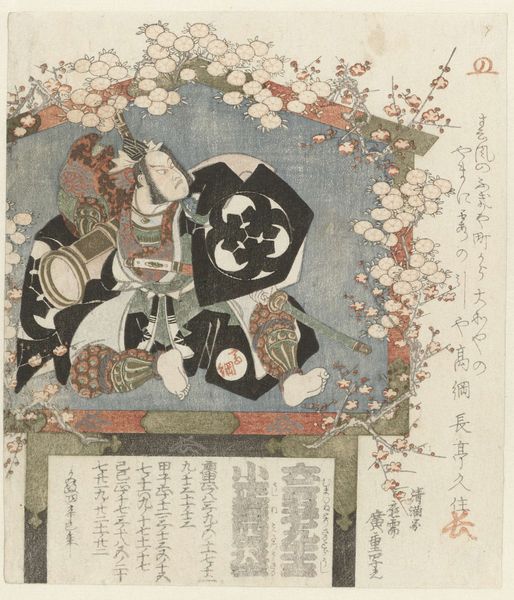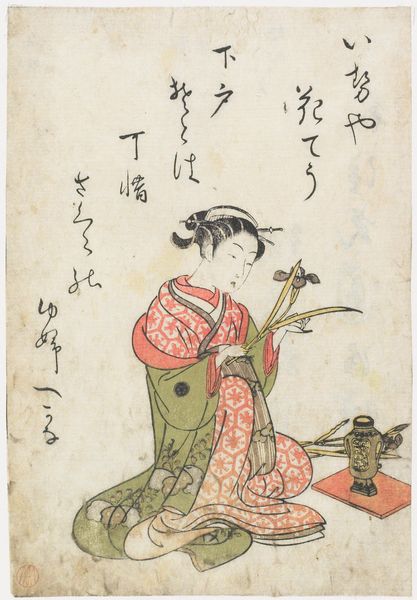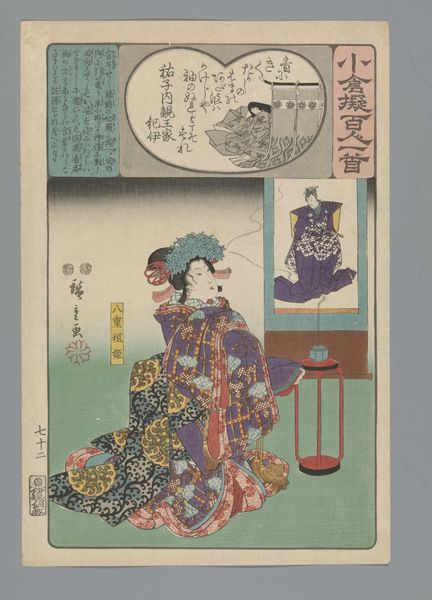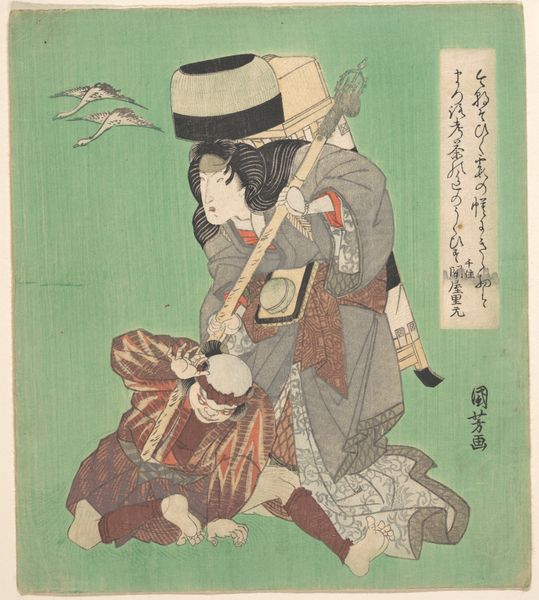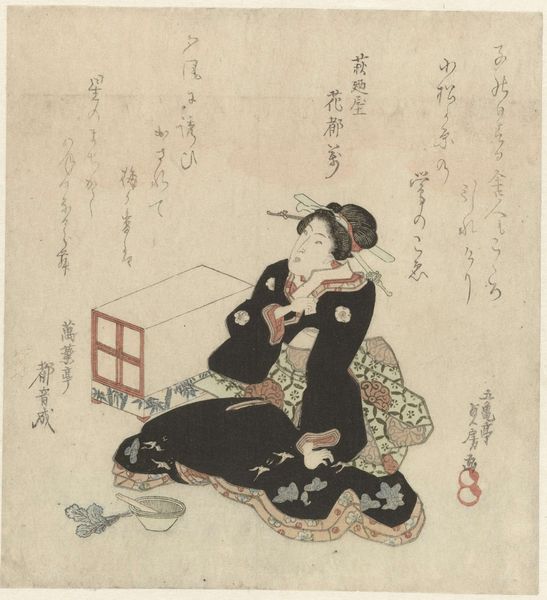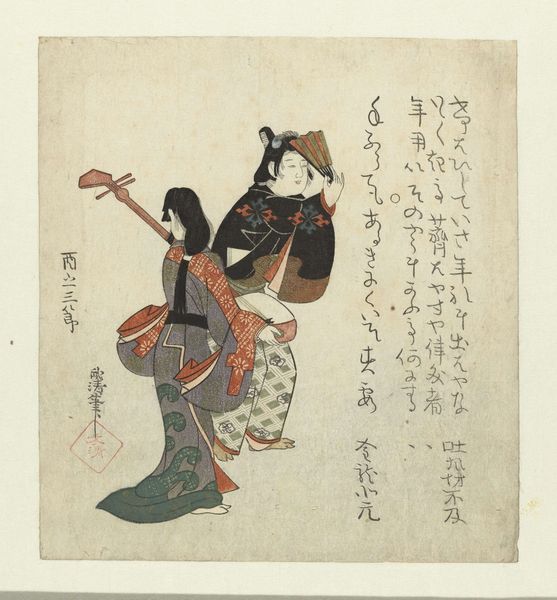
Een oude schildering van de courtisane Yugiri uit de Tajirô collectie door Matora c. 1890 - 1900
0:00
0:00
Dimensions: height 210 mm, width 185 mm
Copyright: Rijks Museum: Open Domain
Editor: Here we have Matora's woodblock print from around 1890-1900, portraying Yugiri, a courtesan. There's a stillness about the image, but also a complexity in the patterning of her robes. What do you see in this piece from a different angle? Curator: Well, I am immediately drawn to the production of this Ukiyo-e print, not just the subject. Consider the woodblock process: the labor involved, the transfer of design, the carving, the inking, and the careful layering of colors. These materials—the wood, the paper, the inks—are central to the art's existence. The choice of those specific pigments matters. Also, we must consider the broader social context: How does mass production through woodblock printing impact the perceived value of art, blurring the lines between high art and craft? Editor: That's interesting; I hadn't thought so much about the actual making of it. Is that the point? To consider production over artistry? Curator: Not 'over,' but 'alongside'. The 'artistry' is undeniable, but inseparable from its mode of production. What social and economic systems enabled this print to exist, and how did the artist navigate those forces? The commercial context is unavoidable with Ukiyo-e. Prints such as these weren't precious objects in the traditional sense. How does the materiality challenge the aura of a unique masterpiece? Editor: So by examining the materials and techniques, we get a clearer picture of its value and social impact in society, then and now. I see this image in a different light, now! Curator: Precisely! And appreciating how it challenged definitions and production processes is crucial.
Comments
No comments
Be the first to comment and join the conversation on the ultimate creative platform.
